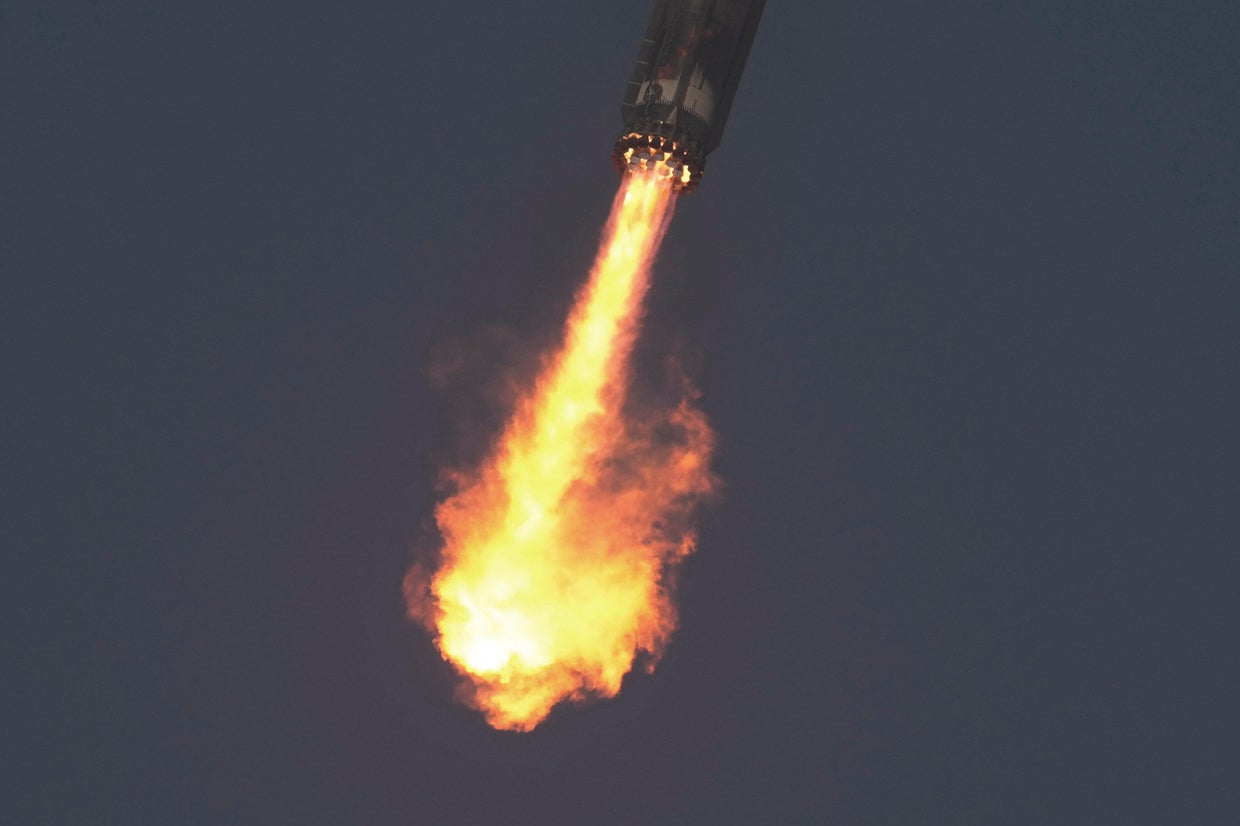
Largest shark that ever lived: Scientists unlock mystery about the megalodon

SpaceX Starship breaks apart after launch in second failure in a row
 SpaceX launched its huge Starship rocket on the program's eighth test flight Thursday, but a malfunction of some sort triggered multiple upper stage engine shutdowns and the vehicle failed to reach its planned sub-orbital altitude, breaking apart in a spectacular shower of debris.
SpaceX launched its huge Starship rocket on the program's eighth test flight Thursday, but a malfunction of some sort triggered multiple upper stage engine shutdowns and the vehicle failed to reach its planned sub-orbital altitude, breaking apart in a spectacular shower of debris.
It was the second failure in a row for a Starship upper stage, a vehicle critical to NASA's plans to return astronauts to the moon in the next few years.
"During Starship's ascent burn, the vehicle experienced a rapid unscheduled disassembly and contact was lost. Our team immediately began coordination with safety officials to implement pre-planned contingency responses," SpaceX said in a statement.
"We will review the data from today's flight test to better understand root cause. As always, success comes from what we learn, and today's flight will offer additional lessons to improve Starship's reliability."
"We're on the moon": private Blue Ghost spacecraft makes an historic lunar landing

A commercial spacecraft carrying NASA experiments successfully touched down on the moon's surface early Sunday morning, ushering in a new phase of private space exploration.
American firm Firefly Aerospace, which livestreamed the descent of its Blue Ghost lunar lander, said the craft arrived on the moon's surface at 3:34 a.m. EST.
"You all stuck the landing. We're on the moon," Blue Ghost chief engineer Will Coogan said on the livestream, eliciting cheers from the mission control room.
Several companies have attempted commercial lunar landings in recent years. A spacecraft sent to the moon by Houston-based Intuitive Machines last year stopped operating after landing on its side, and in 2023 a lander launched by the Japanese company ispace crashed onto the lunar surface.
Webb telescope observes violence around Milky Way's central black hole

Searching the entire sky for the secrets to our universe

As soon as the end of February, NASA and the Jet Propulsion Laboratory will launch a new telescope into orbit around the Earth called SPHEREx. Its goal is to examine nothing less than the essential ingredients of life in our galaxy and the origin of the universe itself.
SPHEREx will join the ranks of other space telescopes, filling in a crucial gap by detecting infrared light with wavelengths too long to see with the naked eye. It's an important addition because no single instrument can fully perceive the universe and its contents.
The new telescope's infrared detectors have to be kept super cold, so the instrument is housed inside three concentric cones atop a set of mirrors that protect it from the sun's energy and the spacecraft's own heat. The whole thing looks like a giant funnel.
"It weighs a little less than a grand piano and uses about 270, 300 watts of power — less than a refrigerator," said Beth Fabinsky, SPHEREx's deputy project manager, at a press conference in late January.
Scientists find a 35,000-year-old saber-toothed kitten in the Siberian permafrost

An ancient cat was found almost perfectly preserved in Siberia's permafrost.
Researchers found the mummy of a 35,000-year-old saber-toothed cub in what is now Russia's northeastern Sakha Republic, also known as Yakutia, in 2020. A study published this past week in the journal Scientific Reports shows that the cat was just three weeks old when it died, but its cause of death is unknown.
The kitten still had its whiskers and claws attached when it was pulled out of the permafrost, and was covered in a coat of "short, thick, soft, dark brown fur." Its hair was about 20 to 30 millimeters long, according to researchers.
Bolivian scientists to track glacial changes at high speed with new equipment

More Articles...
Page 2 of 61

 Science Glance
Science Glance






























